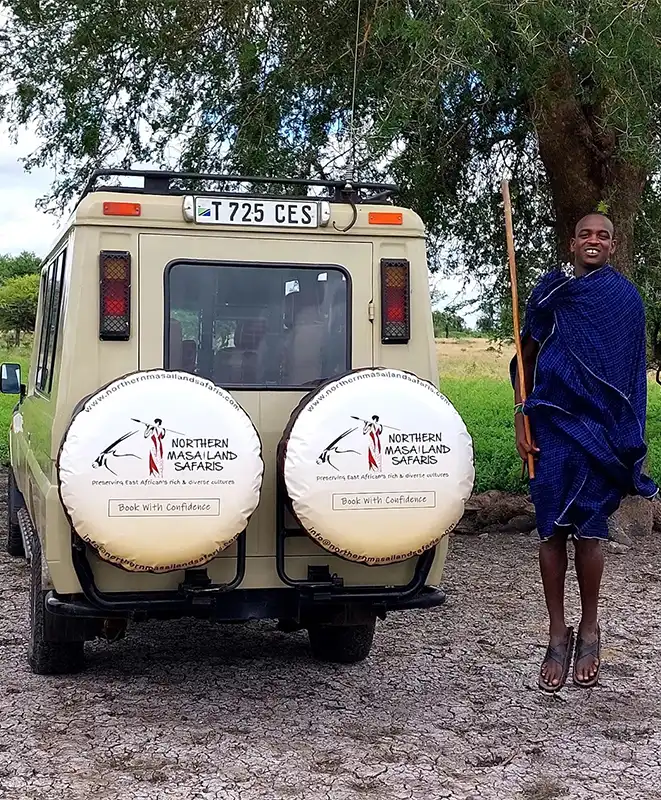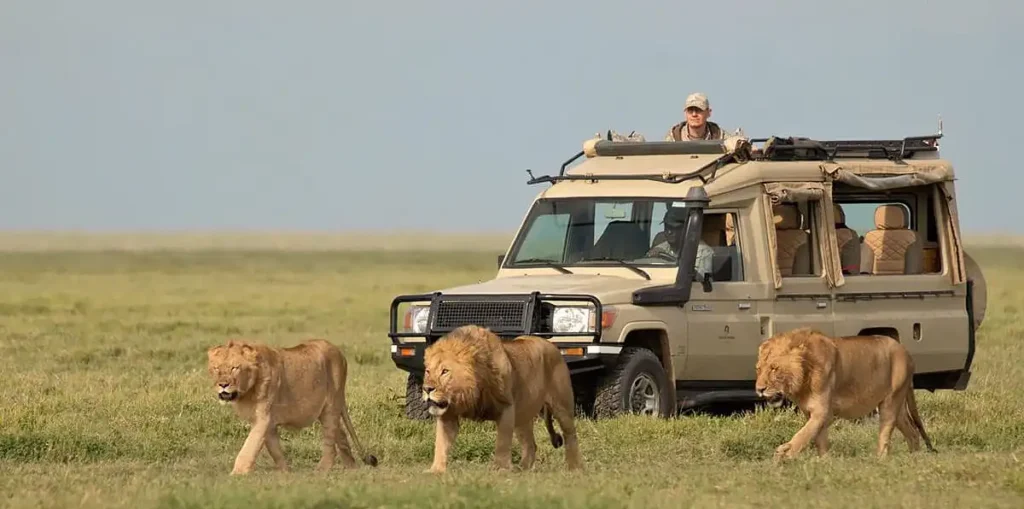If you want the ultimate Kilimanjaro experience, plenty of time to acclimatize, jaw-dropping 360° views, and the highest summit success rate, the Northern Circuit Route is your golden ticket.
At 9 days on the mountain, it’s Kilimanjaro’s longest official route and the only one that circles the mountain’s northern slopes, offering remote trails far from the usual crowds. It combines the beauty of the Lemosho Route’s western approach with a unique northern traverse, giving trekkers more variety in terrain, climate, and perspective than any other path.
Yes—it’s longer, pricier, and requires more days off work, but for those who can spare the time and budget, the Northern Circuit is as close to a guaranteed summit as Kilimanjaro gets.
Highest summit success rate – ~95% on the 9-day itinerary.
Maximum acclimatization – Longest time at altitude.
Epic scenery – Western slopes, northern wilderness, and the crater rim.
Low crowd levels – Quiet northern flank avoids busier southern camps.
| Feature | Details |
|---|---|
| Distance | ~98 km (61 miles) |
| Duration | 8–9 days |
| Difficulty | Moderate (thanks to gradual ascent) |
| Accommodation | Camping |
| Success Rate (9 days) | ~95% |
| Best Time to Go | Jan–Mar, Jun–Oct |
Day 1 – Londorossi Gate (2,100 m) to Mti Mkubwa Camp (2,785 m)
Distance: 4 km (2.5 miles)
Hiking Time: 3–4 hours
Scenery: Rainforest teeming with wildlife.
Day 2 – Mti Mkubwa to Shira 1 Camp (3,610 m)
Distance: 8 km (5 miles)
Hiking Time: 5–6 hours
Transition from forest to moorland.
Day 3 – Shira 1 to Shira 2 Camp (3,850 m)
Distance: 7 km (4.3 miles)
Hiking Time: 4–5 hours
Views of Kibo peak and Mt. Meru.
Day 4 – Shira 2 to Lava Tower (4,630 m) to Moir Hut (4,206 m)
Distance: 14 km (8.6 miles)
Hiking Time: 6–8 hours
Key acclimatization day—climb high, sleep lower.
Day 5 – Moir Hut to Buffalo Camp (4,020 m)
Distance: 12 km (7.5 miles)
Hiking Time: 5–7 hours
Enter Kilimanjaro’s northern wilderness.
Day 6 – Buffalo Camp to Third Cave Camp (3,870 m)
Distance: 8 km (5 miles)
Hiking Time: 4–5 hours
Peaceful, remote trekking day.
Day 7 – Third Cave to School Hut (4,800 m)
Distance: 5 km (3.1 miles)
Hiking Time: 4–5 hours
Rest and prepare for summit night.
Day 8 – Summit Attempt: School Hut to Uhuru Peak (5,895 m), then Mweka Camp (3,100 m)
Distance: 6 km up + 11 km down
Hiking Time: 10–14 hours
Reward: Sunrise from Africa’s rooftop.
Day 9 – Mweka Camp to Mweka Gate (1,640 m)
Distance: 10 km (6.2 miles)
Hiking Time: 3–4 hours
Celebration: Certificate and photos.
Advantages:
Best acclimatization profile of any route.
Highest summit success rate.
Variety of landscapes—rainforest, moorland, alpine desert, arctic.
Quieter trails with minimal early congestion.
Disadvantages:
Longest route—requires more time and budget.
Colder nights due to longer exposure.
Not ideal for those on tight schedules.
Dry seasons offer the safest and most pleasant experience:
January–March – Cooler, fewer crowds, possible summit snow.
June–October – Warm days, clear skies, slightly busier near the end.
The Northern Circuit is considered moderate because of its gradual climb, but the longer days and colder nights demand stamina. Train with:
Long hikes (6–8 hours) with a weighted pack.
Regular cardio workouts (running, cycling, stair climbing).
Strength training for legs and core.
Clothing: Full layering system for temperatures from +20°C to -10°C.
Footwear: Waterproof boots with ankle support.
Gear: Cold-weather sleeping bag, trekking poles, hydration system.
Extras: High-SPF sunscreen, power bank, thermal gloves.
Customise one of our recommended trips or design your own from scratch
or call us on: +255754982525


Book Your Safari Now & Get a Free Masai Culture Tour!
The Maasai are a proud and vibrant tribe known for their distinctive customs and way of life. This free tour offers a unique opportunity to interact with the Maasai people.
Still Have Questions? We’re Here to Help! Contact Us
To secure the best lodges and ensure park availability, we recommend booking at least six months in advance, especially if you’re planning to travel during peak seasons, such as June to October or December to February.
It’s simple. Reach out to us directly through our website, email, or WhatsApp. Let us know your:
Preferred travel dates
Group size
Budget and interests
We’ll send you a customized itinerary within 24–48 hours.
We’ll need your:
Travel dates (fixed or flexible)
Number of travelers (adults and children)
Safari preferences (e.g., luxury, mid-range, or budget)
Activities you’re interested in (e.g., game drives, hot air balloon, cultural visits)
To confirm your safari, we ask for a 30–50% deposit depending on the itinerary. The remaining balance is due 30 to 45 days before your safari begins.
Yes, it’s highly recommended. Your policy should cover medical emergencies, trip cancellation, and baggage loss.
A 30% to 50% deposit is required to confirm your safari booking.
The balance must be paid in full no later than 30 to 45 days before the safari start date.
Bookings made within 30 days of the safari require full payment at the time of confirmation.
We accept the following payment options:
Bank wire transfer (details provided upon request)
Credit/Debit card (processing fees may apply)
Mobile payment options are available in Tanzania
USD ($) is the preferred currency for all transactions
Please note: All bank charges and currency conversion fees are the responsibility of the client.
If you choose to cancel your safari, the following refund terms apply based on the number of days before your safari start date:
| Notice Period Before Travel | Refund on Total Payment |
|---|---|
| More than 60 days | 90% refund |
| 45 – 59 days | 75% refund |
| 30 – 44 days | 50% refund |
| 15 – 29 days | 25% refund |
| Less than 15 days | No refund |
All refunds exclude transaction, bank, and administrative fees.
No refunds will be issued for no-shows, missed departures, or unused services once the safari begins.
In the unlikely event that we must cancel your trip due to unforeseen circumstances (e.g. natural disaster, political instability, or other force majeure events), you will be offered:
A full refund, or
The option to reschedule your safari at no extra cost
Date or itinerary changes are allowed free of charge up to 30 days before departure, subject to availability.
Within 30 days, amendments may incur extra charges based on supplier policies (lodges, airlines, etc.).
All approved refunds are processed within 14 business days.
Refunds are returned using the same method of original payment, unless otherwise agreed.
Passport Validity: Must be valid for at least 6 months from your entry date into Tanzania, with at least two blank pages.
Tourist Visa: Required for most nationalities. You can:
Apply online via the official Tanzania Immigration website: https://visa.immigration.go.tz
Or get a visa on arrival at major airports (Kilimanjaro, Dar es Salaam, Zanzibar)
Cost: Typically $50 USD, $100 USD for U.S. citizens (subject to change)
Tip: We recommend applying online at least 2–3 weeks before travel for faster processing.
Yellow Fever Vaccination:
Required only if you are arriving from or transiting through a yellow fever–risk country (e.g., Kenya, Uganda, Ethiopia).
You must carry your Yellow Fever certificate if applicable.
Recommended Vaccines:
Tetanus, Hepatitis A and B, Typhoid, and COVID-19 (not mandatory but encouraged)
Malaria Prevention:
Tanzania is a malaria-risk zone; consult your doctor for suitable anti-malarial medication.
Use mosquito repellent and wear long sleeves at dawn/dusk.
Travel insurance is mandatory when booking with Northern MasaiLand Safaris. Your policy should cover:
Medical emergencies and evacuation
Trip cancellation or interruption
Lost or delayed baggage
COVID-19-related delays (if applicable)
You must provide proof of insurance before arrival.
Main Airports:
Kilimanjaro International Airport (JRO) – most common for Northern Circuit safaris
Julius Nyerere International Airport (DAR) – for southern Tanzania or Zanzibar connections
Zanzibar Airport (ZNZ) – for beach holidays
Domestic Flights: We can book internal connections (Arusha to Serengeti, Zanzibar, etc.) as part of your itinerary.
Currency: Tanzanian Shilling (TZS), though USD is widely accepted.
Cards: Credit/debit cards accepted at most lodges (some with surcharges), but carry cash for tips, local markets, and small purchases.
ATMs: Available in major towns (Arusha, Moshi, Zanzibar), but not in national parks.